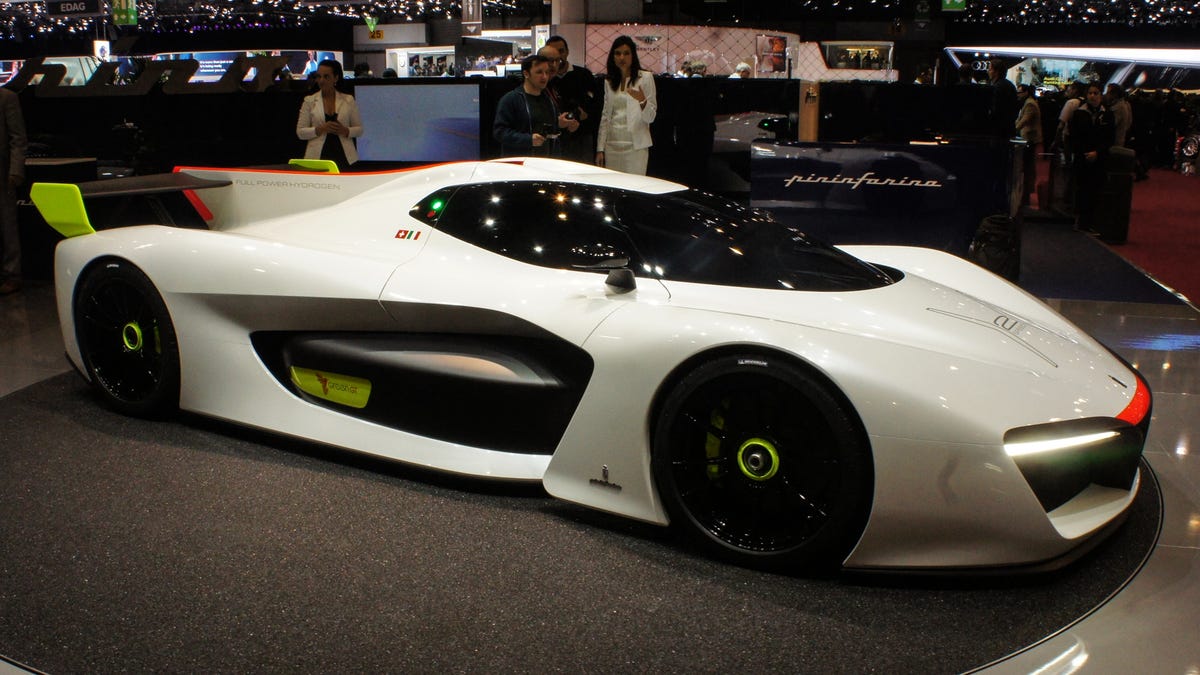Pininfarina converts hydrogen into speed
With its H2 Speed car, shown off here at the Geneva Motor Show, the Italian automotive designer debuts an environmentally friendly race car that uses hydrogen to generate electricity.

The idea of using hydrogen fuel cells as part of a car's drivetrain has risen and fallen a few times over the last 20 years, but it seems to be on the rise again. Toyota and Honda have both launched fuel cell passenger cars and now Italian automotive designer Pininfarina has jumped on the bandwagon, showing off a fuel cell race car here at the 2016 Geneva Motor Show.
The car on display is the H2 Speed, built using carbon fiber and exhibiting the lines of a Le Mans LMP race car, but using a fuel cell stack to power its electric drive motors.
Hydrogen fuel cell stacks take in compressed hydrogen from tanks and oxygen from the air, combining these elements in a reaction that produces electricity and water. In an electric car, the fuel cell stack can take the place of or supplement batteries, powering the car's electric drive motor. Automakers are interested in this technology because it doesn't produce harmful emissions, and hydrogen tanks can be filled much faster than a battery can be charged.
For the H2 Speed, Pininfarina partnered with a Swiss company called GreenGT, which produces high performance fuel cell drive systems, and has already tested prototype race cars. The system in the H2 Speed uses two electric drive motors making about 500 horsepower and a two 210-kilowatt fuel cell stacks. The system gets the 3,130-pound car to 62 mph in 3.5 seconds, and gives it a top speed of 186 mph.
Although much of the H2 Speed is made from carbon fiber, the overall weight comes out as heavier than typical Le Mans cars, which come under 2,000 pounds. The H2 Speed stores about 13 pounds of compressed hydrogen in its tanks. Range figures have not been posted.
With Europe developing rules to restrict CO2 emissions, the H2 Speed may represent the future of professional racing. It certainly makes fuel cell technology look more attractive than what we've seen from cars such as Toyota's Mirai.

